#Charles jencks
Text

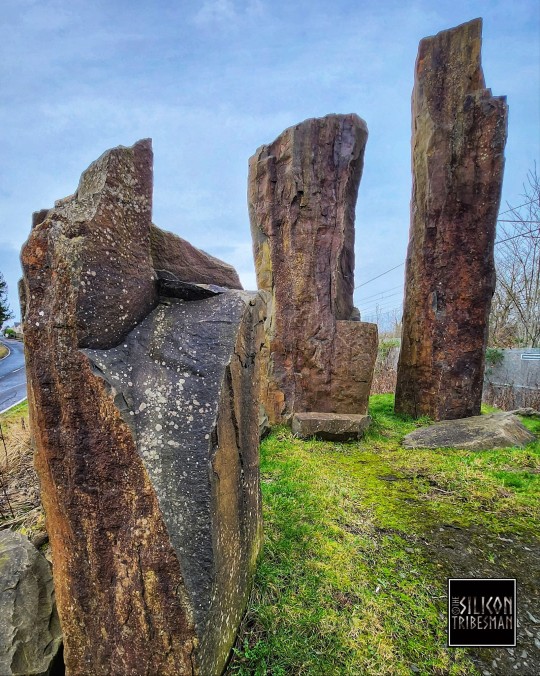

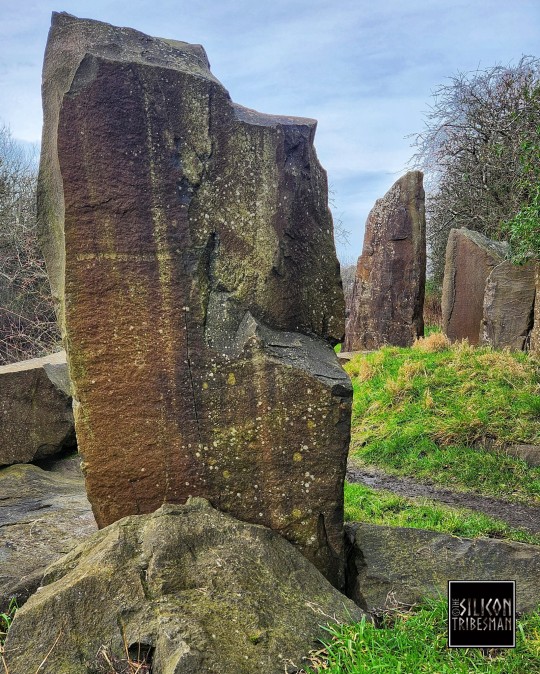


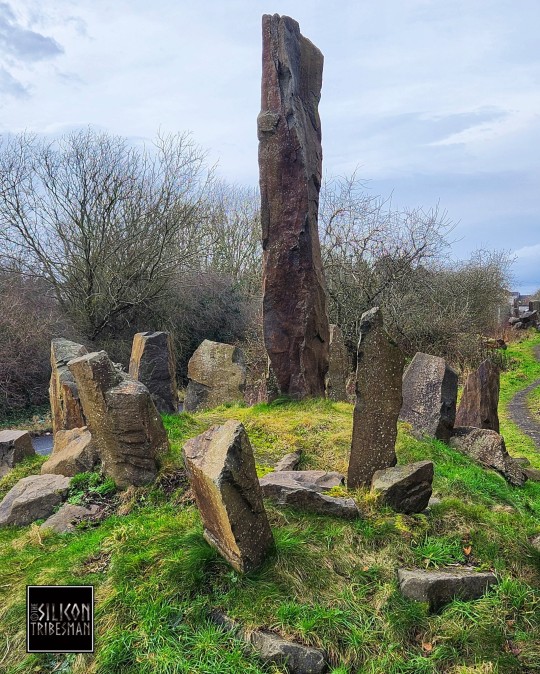
Charles Jencks , 'A Stone's Progress', Landscape Art, Kirknewton, Scotland
A first visit for me to another work of Charles Jencks; always otherworldly but relatable.
#artwork#stonework#basalt#stone#outdoor art#art#landscape art#contemporary art#standing stones#prehistory#time#Scotland#Charles Jencks
82 notes
·
View notes
Text
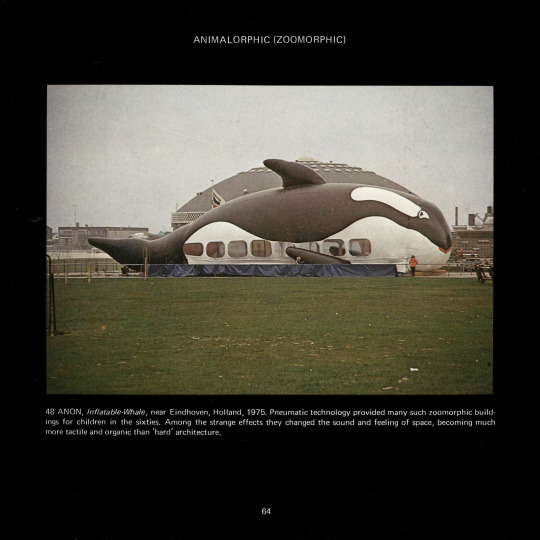
Charles Jencks, Bizarre Architecture, Animalorphic (Zoomorphic), 1979
#architecture#design#art#form#Charles Jencks#bizarre architecture#animalorphic#zoomorphic#inflatable#inflatable whale#whale#scale#size#caricature
78 notes
·
View notes
Text

Architecture: Gothic Windows
If you look at Gothic detailing right down to the bottom of a column or the capital of a column, it's a small version of the whole building; that's why, like dating the backbones of a dinosaur, a good historian can look at a detail of a Gothic building and tell you exactly what the rest of the building was, and infer the whole from the parts.
#Charles Jencks#gothic#gothic architecture#Gothic arches#gothic cathedral#stained glass#architecture#architecture and design#architecture aesthetic#moodboard#aesthetic#Architecture moodboard
12 notes
·
View notes
Text

#the cosmic house#detail#door knob#postmodernist#postmodernist architecture#postmodernism#architecture#interiors#charles jencks
3 notes
·
View notes
Photo
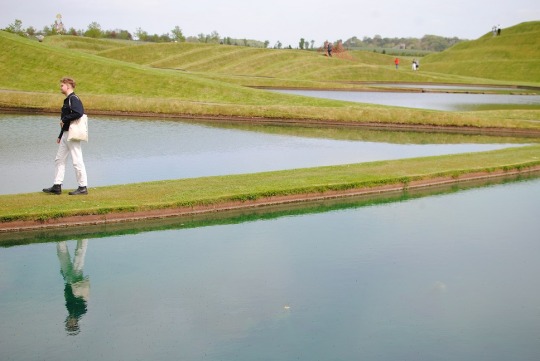
14.05.2022_2:09 PM
#photograph#Finbarr O'Dempsey#Cells of Life#Charles Jencks#Jupiter Artland#Wilkieston#Edinburgh#Scotland
3 notes
·
View notes
Photo

https://fr.euronews.com/video/2022/08/28/corruption-en-inde-destruction-des-deux-tours-de-la-honte-a-lexterieur-de-new-delhi
J’accuse, Voltaire qui guele; Saez qui accuse le capitalisme;
accuser: Signaler ou présenter (qqn) comme coupable.Accuser qqn de plagiat.
Le coupable pour elle c’est le manque de sommeil.
Elle accuse le coup; montrer que tu es affecter par quelque chose. J’accuse le coup.
Et si c’était l’heure de voir le peuple (représenter ici par le gouvernement) plastifier les oeuvres du promoteur dit corrompu?
Loin de vouloir faire un manifeste pour la violence, la destruction d’edifice et le gachie de matériaux.. Halte ! Et si c’était en réalité une représentation d’un monde qui tombe dans l’abbération la plus totale? Qui est le méchant? Ou est le bon sens? Pourquoi ne pas avoir récupérer ces deux tours plutôt que des les détruires? L’aide, New Delhi est-elle une ville acceuillante? Sommes nous tous logé au sol ou au ciel? Pourquoi un tel gachi?
Le bon sens n’existe t-il tout simplement plus. Que l’on soit chez les gentils ou chez les méchants la connerie atteint sont sommé. Plus de bon sens, ni chez l’un, ni chez l’autre. Démolissons bande de cons !
Mais.. Entendons l’argument du spectacle. Il est clair qu’ici cela a fait parlé ! New Dehli explose les barres des promoteurs.. C’est quand même plus radicale, plus grandiose, que d’enfermer le promoteur. Ici, c’est le grandiose, le spectacle qui prime. Il faut faire la publicité de la ville et on use le cadre bati pour le faire. C’est un film qui devient réalité, c’est action était “impensable” auparavant. Mais, après réfléxion on voit plutôt que l’agressivité du maire de la ville ici. Le bon sens poubelle, le bon sens poubelle !
Si l’on écoute les arguments de la destruction c’est clair. La tour est inhabité depuis plusieurs années, elle devient en mauvaise état: infiltration des eaux, rouilles; in-fini. Elle risque de s’écrouler de elles mêmes. Personne ne peut payer la réaffectation de la tour (est-ce que quelqu’un à proposer un projet?) il est décidé au nom de la sécurité de ses abords de la démolire.
1 note
·
View note
Text
we've found it folks: mcmansion heaven
Hello everyone. It is my pleasure to bring you the greatest house I have ever seen. The house of a true visionary. A real ad-hocist. A genuine pioneer of fenestration. This house is in Alabama. It was built in 1980 and costs around $5 million. It is worth every penny. Perhaps more.
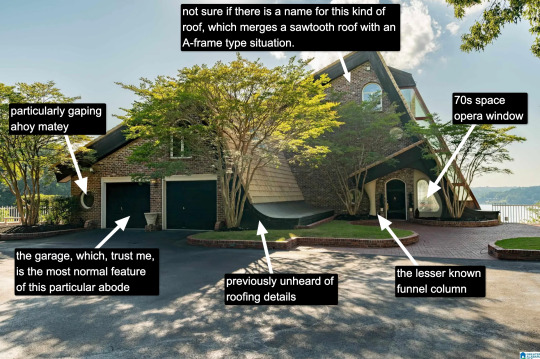
Now, I know what you're thinking: "Come on, Kate, that's a little kooky, but certainly it's not McMansion Heaven. This is very much a house in the earthly realm. Purgatory. McMansion Purgatory." Well, let me now play Beatrice to your Dante, young Pilgrim. Welcome. Welcome, welcome, welcome.
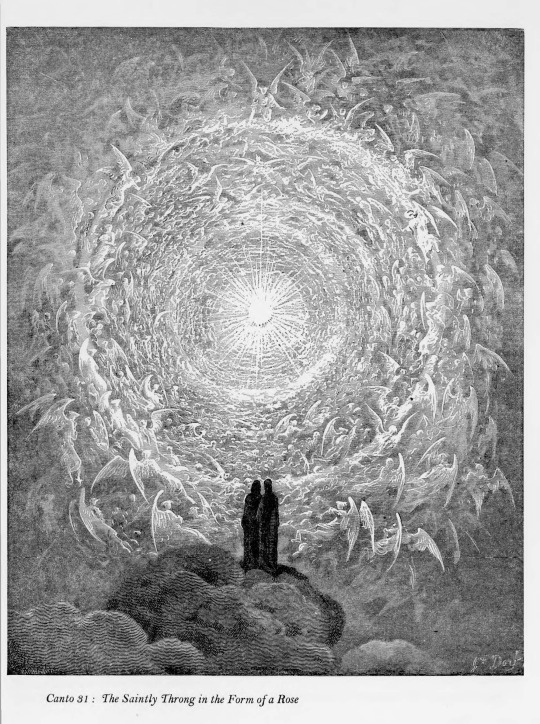
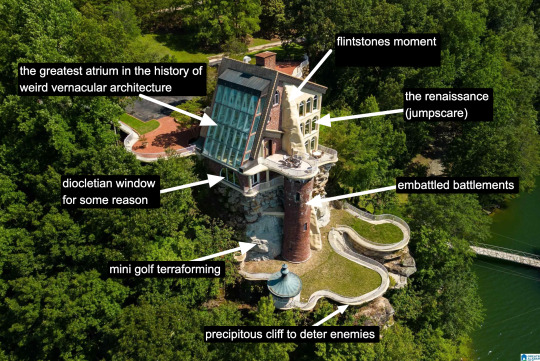
It is rare to find a house that has everything. A house that wills itself into Postmodernism yet remains unable to let go of the kookiest moments of the prior zeitgeist, the Bruce Goffs and Earthships, the commune houses built from car windshields, the seventies moments of psychedelic hippie fracture. It is everything. It has everything. It is theme park, it is High Tech. It is Renaissance (in the San Antonio Riverwalk sense of the word.) It is medieval. It is maybe the greatest pastiche to sucker itself to the side of a mountain, perilously overlooking a large body of water. Look at it. Just look.

The inside is white. This makes it dreamlike, almost benevolent. It is bright because this is McMansion Heaven and Gray is for McMansion Hell. There is an overbearing sheen of 80s optimism. In this house, the credit default swap has not yet been invented, but could be.

It takes a lot for me to drop the cocaine word because I think it's a cheap joke. But there's something about this example that makes it plausible, not in a derogatory way, but in a liberatory one, a sensuous one. Someone created this house to have a particular experience, a particular feeling. It possesses an element of true fantasy, the thematic. Its rooms are not meant to be one cohesive composition, but rather a series of scenes, of vastly different spatial moments, compressed, expanded, bright, close.
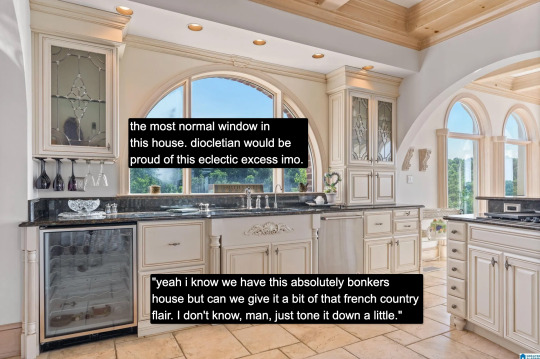
And then there's this kitchen for some reason. Or so you think. Everything the interior design tries to hide, namely how unceasingly peculiar the house is, it is not entirely able to because the choices made here remain decadent, indulgent, albeit in a more familiar way.

Rare is it to discover an interior wherein one truly must wear sunglasses. The environment created in service to transparency has to somewhat prevent the elements from penetrating too deep while retaining their desirable qualities. I don't think an architect designed this house. An architect would have had access to specifically engineered products for this purpose. Whoever built this house had certain access to architectural catalogues but not those used in the highest end or most structurally complex projects. The customization here lies in the assemblage of materials and in doing so stretches them to the height of their imaginative capacity. To borrow from Charles Jencks, ad-hoc is a perfect description. It is an architecture of availability and of adventure.
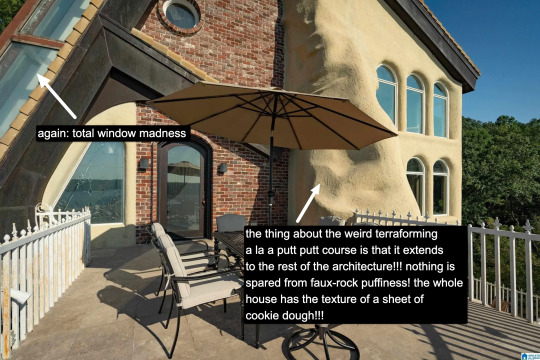
A small interlude. We are outside. There is no rear exterior view of this house because it would be impossible to get one from the scrawny lawn that lies at its depths. This space is intended to serve the same purpose, which is to look upon the house itself as much as gaze from the house to the world beyond.

Living in a city, I often think about exhibitionism. Living in a city is inherently exhibitionist. A house is a permeable visible surface; it is entirely possible that someone will catch a glimpse of me they're not supposed to when I rush to the living room in only a t-shirt to turn out the light before bed. But this is a space that is only exhibitionist in the sense that it is an architecture of exposure, and yet this exposure would not be possible without the protection of the site, of the distance from every other pair of eyes. In this respect, a double freedom is secured. The window intimates the potential of seeing. But no one sees.
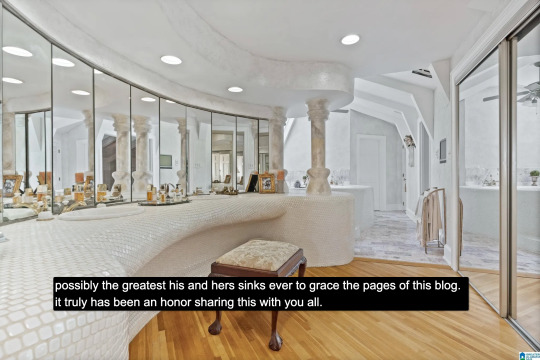
At the heart of this house lies a strange mix of concepts. Postmodern classicist columns of the Disney World set. The unpolished edge of the vernacular. There is also an organicist bent to the whole thing, something more Goff than Gaudí, and here we see some of the house's most organic forms, the monolith- or shell-like vanity mixed with the luminous artifice of mirrors and white. A backlit cave, primitive and performative at the same time, which is, in essence, the dialectic of the luxury bathroom.

And yet our McMansion Heaven is still a McMansion. It is still an accumulation of deliberate signifiers of wealth, very much a construction with the secondary purpose of invoking envy, a palatial residence designed without much cohesion. The presence of golf, of wood, of masculine and patriarchal symbolism with an undercurrent of luxury drives that point home. The McMansion can aspire to an art form, but there are still many levels to ascend before one gets to where God's sitting.
If you like this post and want more like it, support McMansion Hell on Patreon for as little as $1/month for access to great bonus content including a discord server, extra posts, and livestreams.
Not into recurring payments? Try the tip jar! Student loans just started back up!
38K notes
·
View notes
Text


When its first issue was published in 1971 the journal archithese started with a surprisingly renowned roster of contributors and quickly gained attention from well beyond Switzerland. Founding editor Stanislaus von Moos conceived the journal as a departure from the utopian, speculative perspective of 1960s, and especially post 1968, avant-garde magazines and as a turning towards discourse, politics, history and current topics to be addressed in architecture: Thus, archithese was postmodern is in the best sense and allowed contributors to embrace the polyvalent nature of architecture.
Although published bilingually in German/French only the journal was received internationally but some readers surely would have wished for an English translation as well. This circumstance is finally accounted for in a very recent publication by Triest Verlag entitled „archithese reader. Critical Positions in Search of Postmodernity, 1971–1976“: edited by Gabrielle Schaad and Torsten Lange the volume collects groundbreaking texts published in archithese between 1971 and 1976. Organized along the thematic blocks „Historicity and Meaning“, „Realism and Autonomy“, „Urbanism and Consumption“, „Use and Agency“ as well as „Territory and Shelter“ gathers texts by, among others, Charles Jencks, Aldo Rossi, Manfredo Tafuri, Denise Scott Brown and Superstudio. Each block is prefaced by an essay that contextualizes the subsequent texts and provides a broader perspective on the topics discussed. As the thematic headlines indicate the texts address a multitude of topics that underscore the polyphony of post-1968 architectural discourse but also demonstrate that some topics are still relevant today: Jürgen Paul e.g. used the reconstruction of the Kornhaus in Freiburg/Germany as background for a general discussion of reconstructive practices and offers worthwhile links for today’s reconstruction efforts.
By virtue of the diversity of voices assembled in the „archithese reader“ it demonstrates that postmodernity was more than an aesthetic phenomenon but indeed a broad discourse that covered an incredibly broad range of topics. A must read!
19 notes
·
View notes
Photo
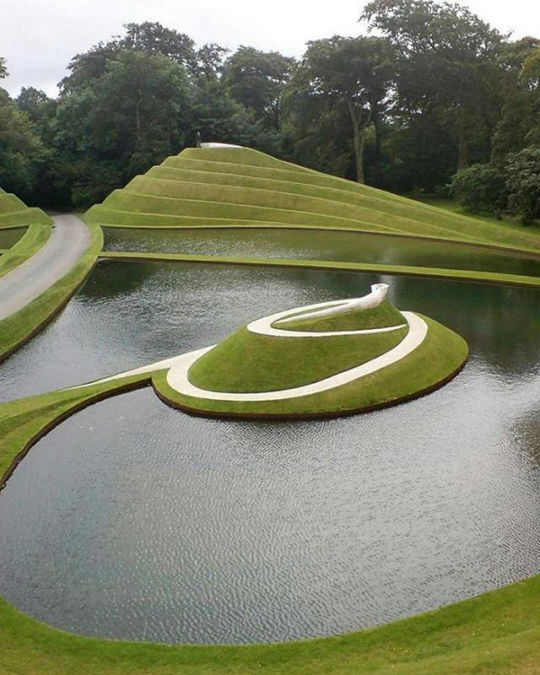
Cells of Life – a landform by Charles Jencks at Jupiter Artland
Follow Souda on Tumblr
Source: https://research-lighting.tumblr.com/post/747334816642531328/cells-of-life-a-landform-by-charles-jencks-at
#Inspiration#Inspiring#dream#surreal#modern#design#product design#home#decor#decoration#home decor#home design#interiors#interior design#living room#bedroom#kitchen#buildings#architecture#furniture#furniture design#industrial design#minimalism#minimal#living rooms#lighting design#lights#bathroom
12 notes
·
View notes
Text
Spiral Hill Landscape Design

Cells of Life – a landform by Charles Jencks at Jupiter Artland - Landscaped garden featuring a spiral hill and surrounding water feature amidst lush greenery.
Follow Ceramic City on Tumblr
Source: https://research-lighting.tumblr.com/post/747334816642531328/cells-of-life-a-landform-by-charles-jencks-at
#Inspiration#Inspiring#dream#surreal#modern#design#product design#home#decor#decoration#home decor#home design#interiors#interior design#living room#bedroom#kitchen#buildings#architecture#furniture#furniture design#industrial design#minimalism#minimal#living rooms#lighting design#lights#bathroom
5 notes
·
View notes
Text
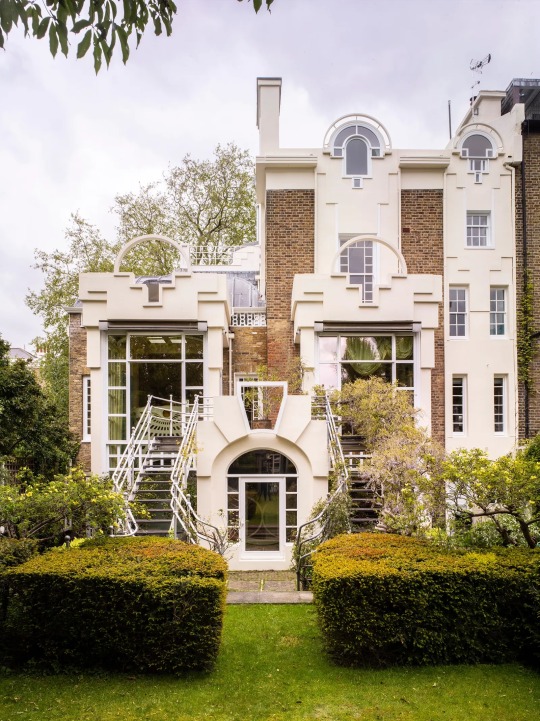
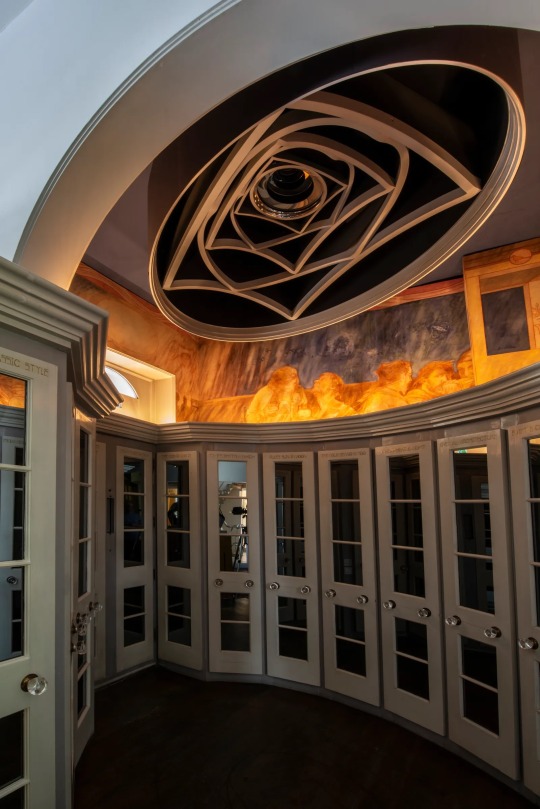
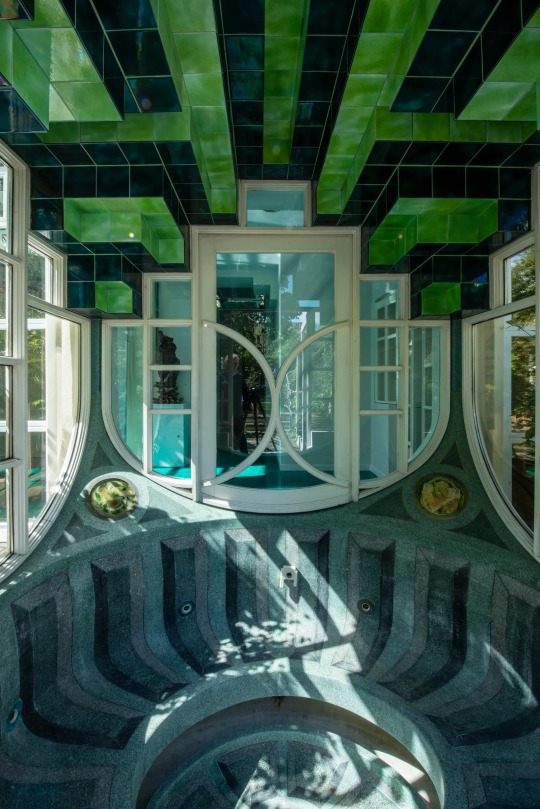
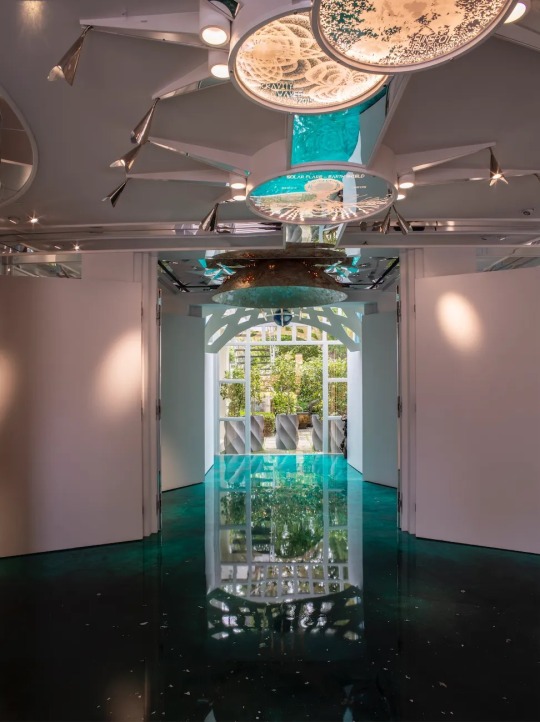
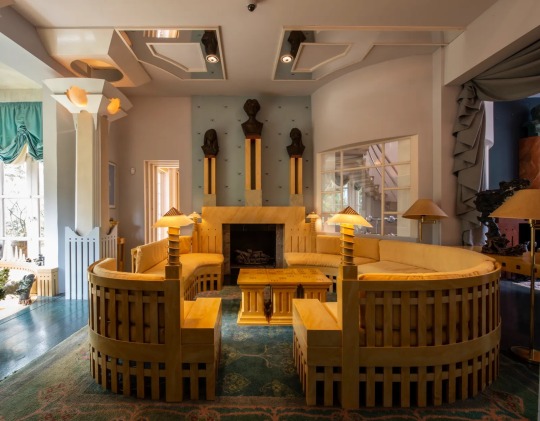


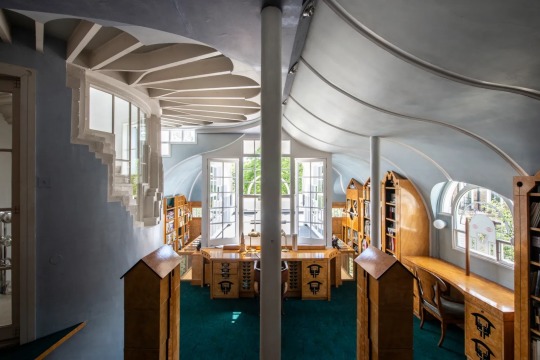
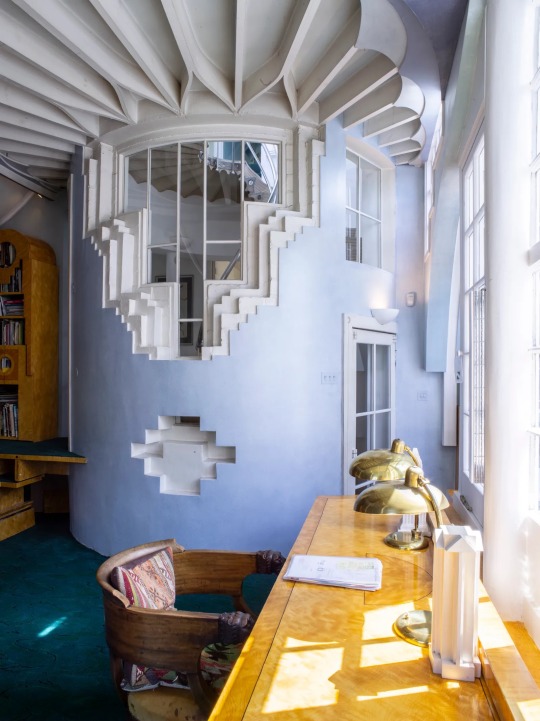
The Cosmic House in Holland Park, London - designed by Charles Jencks. It is a four-floored Victorian residence, which Jencks and Maggie Keswick bought in 1978 which became the spiritual home of postmodernist design in the UK, and regularly hosted conversations with the leading architects and thinkers of the time.
Thee ground floor features rooms dedicated to each of the seasons.
13 notes
·
View notes
Photo

https://archive.org/details/supplementumepig0000unse_x8x3/mode/2up?q=driftworks
This book offers an historical and critical guide to the concepts of the post-modern and the post-industrial. It brings admirable clarity and thoroughness to a discussion of the many different uses made of the term post-modern across a number of different disciplines (including literature, architecture, art history, philosophy, anthropology and geography). It also analyses the concept of the post-industrial society to which the concept of the post-modern has often been related. Dr Rose discusses the work of many theorists in the area, including Hassan, Lyotard, Jameson and the architectural historian Charles Jencks, and also looks at analyses and uses of the concepts of the post-modern and post-industrial by Frampton, Portoghesi, Peter Fuller and others.
11 notes
·
View notes
Text
Behind the Playlist - Transformers: Prime Edition (Part 14 of 22: Predaking)
Link to the other posts in my Behind the Playlist series
✧ ✧ ✧
Predaking is cool. What makes him such a terrifying opponent is what makes him an excellent ally. It all depends on who someone is and whether they respect his power.
Intended overarching themes and/or qualities: Untamed, The Ruthless Hunter, The Alpha
My personal favorite(s) from this playlist: Dangerous, Red October, and Hunt You Down
✧ ✧ ✧
Full song list and explanations under the cut:
Fire Hunt by 2WEI, Ali Christenhusz
No words needed.
This Is My World by Esterly, Austin Jenckes
“This is my world, / Oh, you took a wrong turn / Now you're stuck in my world, / Trust me, this is gonna hurt / Fire it up, and watch it burn, / This is my world”
This is how I like to think Predaking first saw Cybertron upon his arrival. Until he learned to share, that is.
Dangerous by Zayde Wølf
“No, we ain't like them / No, no, we ain't like them / Yeah, you're gonna catch us walking on the edge
We be living so dangerous”
Dragons Win by Steve Jablonsky
Usually they do, yes.
All This Power by WAR*HALL
Once Predaking recognized how powerful he was and could be, there was no going back.
Play with Fire by WAR*HALL
“I don't know any other way / I never lay down, never walk away / I keep pushing like a tidal, pushing like a tidal wave / I don't know how to play it safe / I like walking on a razor blade / I keep burning like a wild, burning like a wild blaze
Baby here I go / I'm outta control / You can't stop me, no
I'm gonna risk it all! (Risk it all) / I'm gonna let 'em fall! (Let 'em fall) / Play with fire! / Play with fire!”
Best Shot by Mountains vs. Machines
“Try shooting me down or knocking me out / You better believe me, I'm making it loud / Everyone thinking they're number one / I'll show 'em, I'll show 'em / Get ready to run / Nothing you can do / See me pushing through / So take your best shot”
Hands Of Fire by Campfire, Leo Gallo
The vibes fit.
Ashes by Endway
Predaking and his fellow Predacons were literally brought forth from the bones and ashes of their ancestors.
Red October by Audiomachine
A powerful instrumental to match Predaking’s powerful beast mode.
Man on Fire by Saint Middleton, Seth Alley, UNSECRET
“I'm a man on fire, I'm a man on fire / Only going higher, only going higher / I'm a man, I'm a man on fire / I'm a man, I'm a man, I'm a man / I'm a man on fire
Dedicated, I'm motivated / The victory is mine for the taking / Let's face it, I'm the greatest / I stay tough, level up, it's like I'm levitating / I came to change the game / I go wild in the cage / It's in my DNA / If you can't take the heat / Then get out of the flame”
Hunt You Down by Vo Williams, UNSECRET
Basically Predaking to Starscream (and anyone else who wrongs him).
Rules of Nature - Platinum Mix by Jason Charles Miller
“Rules of nature! / And they run when the sun comes up / With their lives on the line / (Alive) For a while / (No choice) Gotta follow the laws of the wild / (Alive) With their lives on the line / (No choice) Out here only the strong survive
What's done is done, survived to see another day / The dance of life, the hunter and the agile prey / No guarantee which of them will succeed / Strong or weak”
✧ ✧ ✧
Notes:
This post series is in alphabetical order. Next up are Raf Esquivel and Ratchet.
As I add more songs to the playlist, I’ll update this post.
#transformers prime#transformers prime playlists#tfp#tfp playlists#transformers#transformers playlists#tfp predaking#predaking#maccadam#behind the playlist#Spotify
6 notes
·
View notes
Text
Blog Post #1: The Discontinuous Cores of Los Angeles
The Los Angeles School discussed in class compelled me to recall my recent experience travelling to Los Angeles with my best friends. With a focus on postmodernism, the Los Angeles School suggested a new urban model defined by fragmented and split urban growth and the decline of metropolitan centers. This hypothesis offers a different way of viewing city growth compared to Burgess’s Concentric-Zone Hypothesis (a product of the Chicago School), which suggested that industrial cities grew radially through a series of concentric zones.
One thing that struck me while planning my trip to Los Angeles is how Los Angeles has multiple core areas in the periphery and not strictly in Downtown Los Angeles (DTLA). It seems like a city composed of a sum of disconnected cores, each with its unique character, and devoid of traditional city centers. I could see how automobiles must have been an essential factor in the development of Los Angeles, given that I find it particularly difficult to commute from one core area or suburb to another with public transport. I also recall how amazed I was to see how incredibly diverse and multicultural Los Angeles is. This is consistent with what Charles Jencks said about Los Angeles, whereby “No single ethnic group, nor way of life, nor industrial sector, dominates the scene.” (Palen’s book, p. 76)
As I walked on the streets of DTLA during my trip, I noticed that office buildings, banks, and hotels dominate most spaces. While there are still a few departmental stores left like Macy’s, in my eyes, the retail scene is not as vibrant as I would have imagined in a big city. This observation aligns with our discussion in class about the out-movement of offices, manufacturing, retail trade, and people from the center city to the periphery areas (i.e., suburbs). The opening of large shopping centers like Valley Plaza and Lakewood Center was widespread in the county as massive suburbanization took off after World War II. By the 1960s, Los Angeles residents didn’t find the need to go to DTLA anymore to shop.
Decentralization of economic activities and housing to locations outside of DTLA have certainly taken place in the City of Angels. Take Anaheim on the outskirts of Los Angeles, for example. While it is still part of Los Angeles County, it is a core area of its own and is popularly known for its theme parks. Another example that is integral to the Los Angeles School Hypothesis is Santa Monica which boasts itself of being the home to the headquarters of many businesses, tourist attractions, shopping districts, and real estates, despite being quite a distance from DTLA. Century City is also an example of an edge city that is a thriving business and commerce city outside of DTLA. It is anchored by a 1.3 million-square-feet outdoor shopping mall called Westfield Century City and is very much automobile-dependent.
While the Los Angeles School of Thoughts might be a better representation of the urban sprawl in Los Angeles today, this video showing the growth of Los Angeles from 1877 to 2000 made me think about how Burgess’s Concentric-Zone Hypothesis might have come into play in the city, especially in the early 20th century. Some articles I read also confirmed that the small towns that emerged in the early 1900s centered around the economically booming DTLA. Eventually, a 1,100-mile streetcar system came into the area, establishing an urban footprint there. I remember walking from our hotel in DTLA to Little Tokyo and observing how the buildings were gradually shorter as we walked further away from the financial district of DTLA. The financial district of DTLA can be best described as Zone I—the Central Business District. On the other hand, neighborhoods like Chinatown, Koreatown, and Little Tokyo are reflective of Zone 2—the zone in transition—since they were “immigrant settlements”. I believe that, in the early 1900s, there might be the influence of an urban growth pattern similar to the one described by Burgess when Los Angeles was a relatively small area. However, it was fascinating to see how, in the video, there seems to be concentric growth from different cores in Los Angeles (not necessarily the center city), especially after the 1940s, affirming the Los Angeles School of Thoughts Hypothesis.
As I reflect on this week’s and last week’s readings, I wonder what led to the emergence of these core areas in Los Angeles and how the simultaneous development of different core areas was possible. I look forward to learning more about the sustainability of cities and suburbs whose development was not dependent upon the conventional center cities and how these areas build economic independence.
3 notes
·
View notes
Text

#jencks#jencks foundation#charles jencks#ceiling#architecture#postmodernism#the cosmic house#cosmic#symbolism#skylight
2 notes
·
View notes
Photo

14.05.2022_2:08 PM
#photograph#Finbarr O'Dempsey#Cells of Life#Charles Jencks#Jupiter Artland#Wilkieston#Edinburgh#Scotland
2 notes
·
View notes